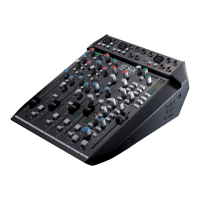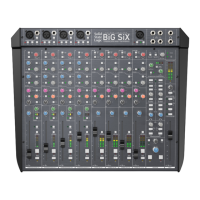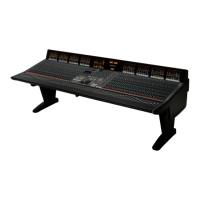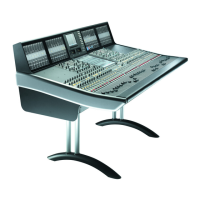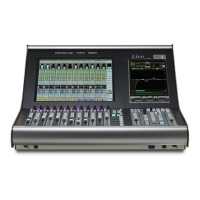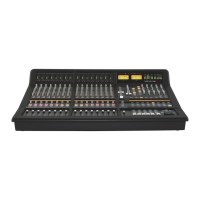SL 9000 J Automation – An Introduction
As discussed before, the J Series Computer provides automation facilities for the
following:
Large Channel Fader and Cut
Small Channel Fader and Cut
Group Fader Levels
Group Fader Solos
Channel FX Send On/Off buttons
Channel Stereo Cue On/Off
Channel Insert In/Out
Channel EQ In/Out
In the following narrative, the automated switches may be referred to as ‘objects’.
The Large Faders and Group Faders are automated using SSL’s patented Ultimation
system which provides the intuitive nature of moving faders, coupled with the
flexibility of a VCA based system. Normally, the fader motors are turned on and
channel audio passes through the fader, except when a specific automation mode
dictates that audio should pass via the channel VCA. If the motors are turned off with
the MOTORS ON/OFF button, audio will only pass via the channel VCAs whenever a
fader is grouped or the automation is turned on.
Automation of the Small Faders is provided by separate VCAs. Note, however, that
Small Fader audio will only pass via the VCA when the automation system is active.
Even then, a specific automation mode (Protect Manual – see Page 5-55) may be
selected to allow the audio to pass directly via the fader.
Regardless of the automation mode selected (see Page 5-15), there are two possible
write statuses for faders – Absolute and Trim. When the system is playing back
previously written data, the faders are in Replay status. At the start of a new mix only,
faders can be set to Manual.
It is important to understand that, with the J Series mix system, Trim data is stored
separately from Absolute data in RAM until the two data streams are merged. When a
mix pass is saved to disk, an automatic merge takes place. Alternatively, an unsaved
mix pass can have its Absolute and Trim data merged by using the Merge Trim
function (see Page 5-51). Separate displays of Absolute and Trim data can be seen on
the Overview display (see Page 5-25).
Unlike G Series, the Large Fader Cuts, along with all the other automated objects, are
treated quite separately to the faders, and may be selected independently to any one of
the automation modes. In any mode, objects can be in one of two statuses – Record or
Play, ie. write or read. G Series users need not worry about complex cut editing
statuses; all you’ll ever need to edit mix data for cuts (and all the other automated
switches) can be handled effortlessly with two new features – Match and Play (see
Page 5-35) and the graphic mix data editing facilities (see Page 5-79).
The Mix System
5-11
20.8.96
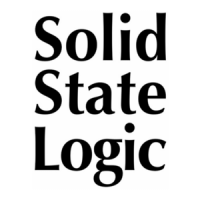
